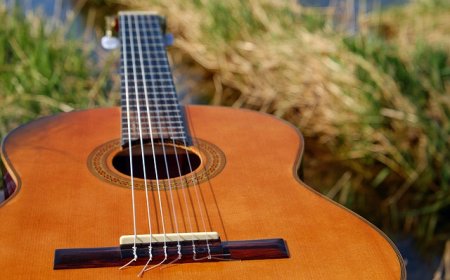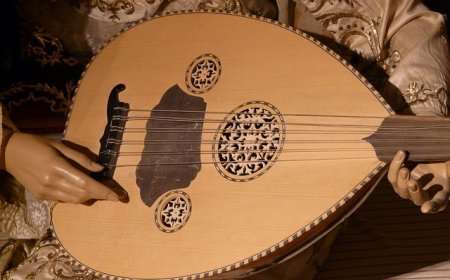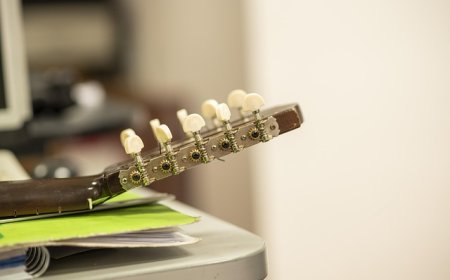Gayageum Facts for Students | Explore Korea’s Traditional String Instrument
Discover the gayageum—a traditional Korean instrument with 12 strings and a peaceful sound. Learn how it works, its parts, history, and how to play it.
🎼 All About the Gayageum
🥇 Introduction
The gayageum is a graceful and ancient plucked string instrument from Korea, with a soft, rippling sound that is used in both traditional and modern music. Played while seated with the instrument resting on the lap or floor, the gayageum is known for its ability to produce beautiful melodies, sliding tones, and expressive vibrato. It is often compared to the Japanese koto or Chinese guzheng, but it has a sound and style all its own.
🎶 What Is a Gayageum?
The gayageum (also spelled kayagum) is a zither-style instrument traditionally with 12 silk strings, though modern versions may have 18, 21, or more strings. The strings are stretched across a long, hollow wooden body with movable bridges, and the instrument is plucked with the fingers.
The gayageum is played while sitting on the floor, and musicians use one hand to pluck and the other to press, bend, or vibrate the strings. Its music can be slow and peaceful or bright and rhythmic, making it a favorite for everything from court music to pop fusion.
🧩 Parts of the Gayageum
The gayageum may look simple, but each part is carefully designed to create its signature sound:
-
Body - A long, curved piece of wood, traditionally made from paulownia
-
Strings - Usually 12, but modern gayageums may have up to 25 strings
-
Bridges (Anjok) - Movable wooden supports under each string for tuning
-
Tuning Pegs - Located at the end, used to tighten or loosen each string
-
Right Side (Plucking area) - Where the strings are plucked with the fingers
-
Left Side (Pressing area) - Where the player presses the strings for effects
-
Soundboard - The flat top surface that amplifies the sound
Each string can be tuned to different scales depending on the piece being played, making the gayageum very versatile.
⚙️ How Does the Gayageum Work?
The gayageum produces sound when its strings are plucked with the right hand, while the left hand presses, bends, or vibrates the strings to create emotion and ornamentation.
The wooden bridges (anjok) hold up the strings and can be moved to tune each string to the desired note. The long, hollow body acts as a resonator, making the sound louder and fuller.
Gayageum music includes:
-
Jeongak - Court music, slow and elegant
-
Sanjo - Folk-style, fast and expressive
-
Modern fusion - Used in pop, jazz, and film music
📜 History of the Gayageum
The gayageum has a long and rich history. It was developed during the 6th century in the ancient Korean kingdom of Gaya, which is where its name comes from.
According to legend, the gayageum was designed by King Gasil, who wanted an instrument that reflected the spirit of his people. Since then, it has been used in royal court ceremonies, Buddhist rituals, and Korean storytelling.
Over time, different styles of gayageum were created:
-
The jeongak gayageum for court music
-
The sanjo gayageum for folk and fast-paced music
-
Modern gayageums for contemporary performances
🥁 Famous Gayageum Players
These musicians helped keep the gayageum alive and relevant in both traditional and modern music:
-
Hwang Byung-ki - A master composer and performer of modern gayageum music
-
Ji Aeri - A young gayageum virtuoso known for blending tradition and pop
-
Lee Ji-eun (IU) - K-pop artist who has used gayageum sounds in her songs
-
Park Jiha - Experimental musician using gayageum in ambient and jazz music
-
Gong Myoung - A gayageum group bringing new life to Korean traditional music
-
Baik Joo-young - A top gayageum soloist performing worldwide
🎶 Learning to Play the Gayageum
Learning to play the gayageum builds patience and creativity. Students begin by:
-
Learning the correct sitting posture and hand positions
-
Tuning the 12 strings using the bridges and pegs
-
Plucking with the right hand fingers
-
Using the left hand to bend and decorate the notes
-
Practicing traditional melodies and rhythms
Gayageum music is often passed down through oral tradition, but written notation is also used in schools and music conservatories.
😄 Fun Facts About the Gayageum
-
The gayageum is over 1,400 years old!
-
It is the national instrument of Korea.
-
Traditional versions have 12 strings, but modern ones can have up to 25.
-
The word "gayageum" comes from the Gaya kingdom where it was born.
-
You play it while sitting on the floor, and it rests on your lap.
-
Some gayageums are made with beautiful carvings and inlays.
-
The left hand shapes the sound by pressing and sliding on the strings.
👧 Kid-Friendly Summary
The gayageum is a long string instrument from Korea that lies flat and is played by plucking the strings. It has 12 strings and makes soft, beautiful music. It's used in old royal music and also in today's pop songs!
📚 Vocabulary Words
- Gayageum – A Korean string instrument with 12 or more strings
- Zither – A flat string instrument with no neck
- Anjok – The small bridges under the strings that change the pitch
- Sanjo – A fast and exciting style of gayageum music
- Jeongak – Traditional Korean court music
- Vibrato – A slight shaking of the string to make the note more emotional
- Paulownia – A light, strong wood used to make the gayageum
- Resonator – The body that makes the sound louder
❓ Interactive Quiz (8 Questions)
1. Where is the gayageum from?
A. Japan
B. China
C. Korea
D. Thailand
2. How many strings does a traditional gayageum have?
A. 8
B. 10
C. 12
D. 20
3. What kind of instrument is the gayageum?
A. Wind
B. Percussion
C. Plucked string
D. Brass
4. What does the left hand do while playing the gayageum?
A. Nothing
B. Plucks the strings
C. Presses and bends the strings
D. Strikes with a stick
5. What are the small movable pieces under the strings called?
A. Tuners
B. Pegs
C. Frets
D. Bridges or anjok
6. In what position is the gayageum usually played?
A. Standing
B. While lying down
C. Sitting on the floor
D. Hanging on the wall
7. Who was one of the most famous modern gayageum composers?
A. Hwang Byung-ki
B. Yo-Yo Ma
C. Ravi Shankar
D. Miyagi Michio
8. Which K-pop artist used gayageum in music?
A. BTS
B. IU
C. EXO
D. Blackpink





















































